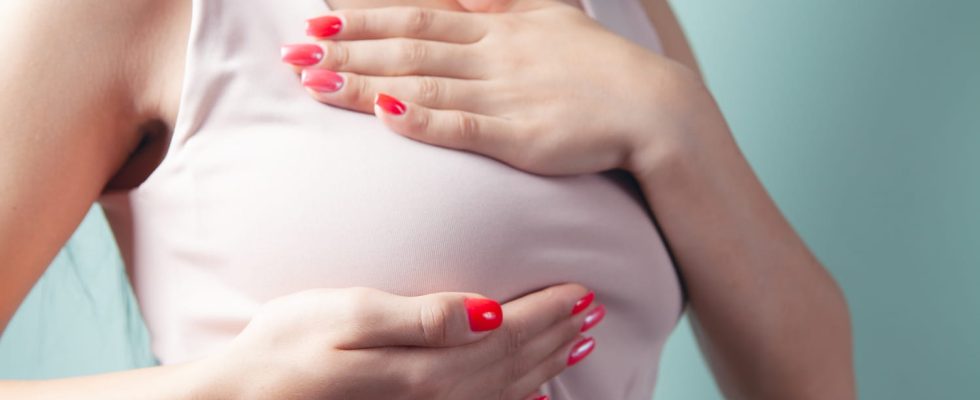Breast palpation is recommended regularly in women to look for any abnormal signs that could suggest breast cancer.
Every woman should feel her breasts at least once a month and look at them in the mirror to possibly spot any “abnormal” signs. This is a recommendation from doctors in breast cancer screening (even if a lump does not always mean cancer).
At what age should breast palpation be performed?
Self-palpation of the breasts is recommended from the age of 25 (but nothing stops you from starting earlier). THE organized breast cancer screening (every 2 years from 50 to 74 years old) includes, in addition to the mammogram, a clinical examination of the breasts (observation and palpation) by the doctor.
How often ?
This palpation must be carried out once a month outside of menstruation, rather after when the tissues are more flexible. It is recommended to always carry out this examination at the same time so that the comparison is relevant. A clinical breast examination (observation and palpation) by a healthcare professional is also recommended. every year from the age of 25. “Doctors need to do a breast palpation during any gynecological examination“, estimates Dr Philippe Mironneau, gynecologist and obstetrician in Dijon.
Breast self-examination begins with inspection in front of a mirror. It is recommended to do so in a seated position or standing with arms hanging then raised:
► Check breast shape in both positions.
► Look at the skin of the breasts if there is no redness, lesions, orange peel, change in color, dimples, small hollows or wrinkles, a localized feeling of heat, a sore, a change in the veins.
► Look at the condition of both nipples if they are not retracted, deviated, if their rounding has not changed and if there is no flow (press it).
The self-examination then consists of palpating the breasts: the right hand palpates the left breast using the tips of the first three fingers and the left hand then palpates the right breast. “It’s important to palpate the entire mammary gland formed by the mid-axillary line, the inframammary line, the edge on the side of the sternum and the clavicle “, explains Dr. Mironneau.
The self-examination finally consists of palpating the armpits to check that there is no lump.
Which ball should alert?
Palpation of the breasts aims to find a lump, a palpable lump. “The examination makes it possible to look for a hard, painless, fixed and irregular mass.“, describes the gynecologist. This lump can be located in the breasts and/or armpits. Although 90% of breast masses are benign, it is important to consult a doctor for any mass or change detected during a self-examination breasts.
When to think about cancer?
Any abnormal signs should be shown to a doctor to check. “A cancer will systematically suspected in front of a nodule of consistency hard, painless, and seeming as if “fixed” in the breast. It will be as much more suspicious if it is irregular and possibly associated with a nipple discharge, skin retraction, adenopathy (swelling of the lymph nodes, editor’s note) axillary above- or infraclavicular” explains it High Authority of Health.
When to consult?
“The signs that should prompt you to consult are perception of a noduleirregular nodule or a plaque at the level of the mammary gland, it is also necessary to consult when there is a discharge from the nipple or when there isappearance of an umbilication of the nipple irreducible and of recent appearance”, explains the gynecologist. If you detect something during the self-examination, it is recommended to quickly speak to your doctor or gynecologist who can then carry out an examination and prescribe additional tests. “The doctor or gynecologist will often suggest carrying outa mammogram associated or not with a breast ultrasound, according to the clinic. Breast MRI being reserved for specific forms and not being a first-line examination“, specifies the specialist.
Thanks to Dr Philippe Mironneau, gynecologist and obstetrician in Dijon. Comments collected in 2021.
